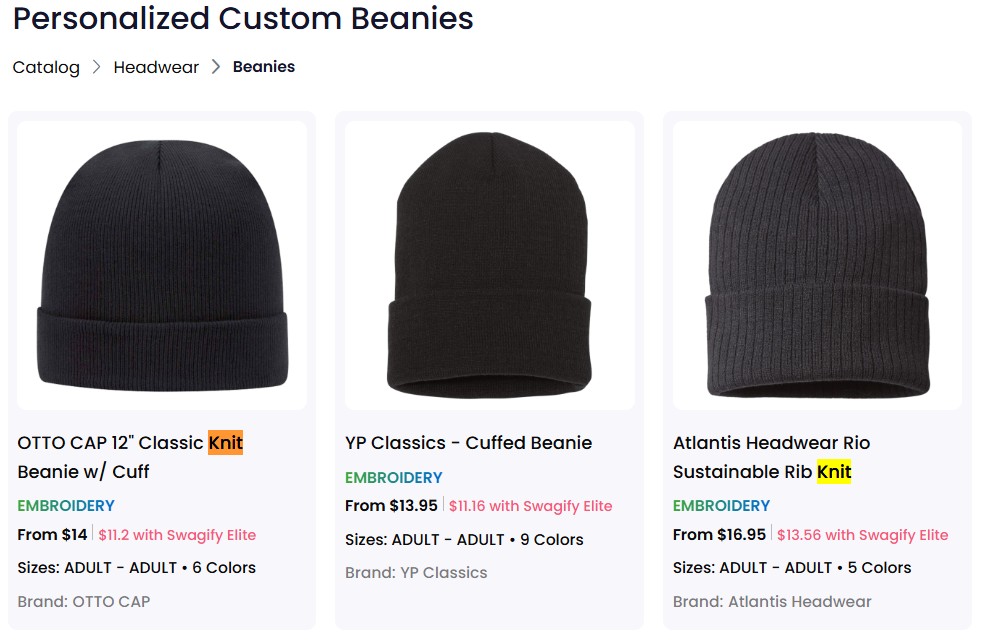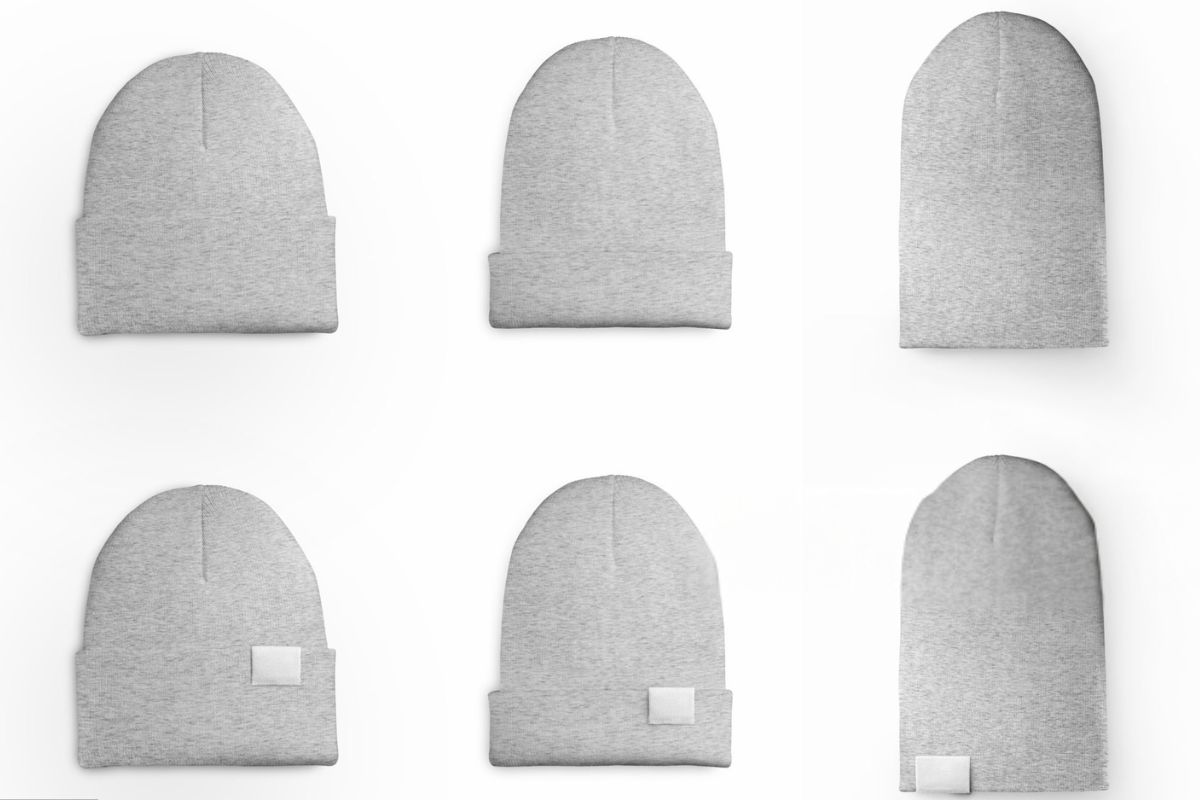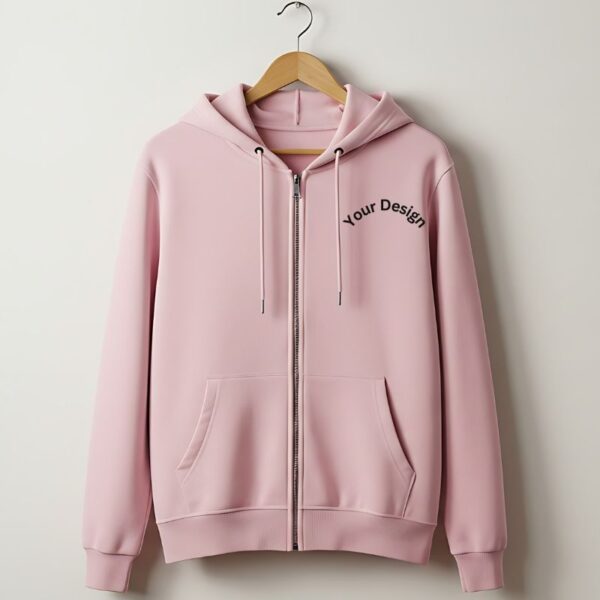Introduction
In today’s personalized fashion landscape, embroidered beanie hats have carved out a unique niche. They’re stylish, practical, and highly customizable—making them perfect for individuals and businesses looking to make a statement. Whether it’s minimalist text, a quirky icon, or a logo that represents a brand, custom embroidery adds a premium, tactile quality that printing methods often lack.
Thanks to print-on-demand (POD) services, selling custom embroidered beanies has never been easier. There’s no need to hold inventory, invest in expensive equipment, or worry about shipping logistics. Everything is automated—allowing creators, artists, and entrepreneurs to focus on designing and selling.
Table of Contents
This guide will walk you through how to design, set up, market, and scale a POD embroidered beanie business from scratch.
Why Choose POD for Selling Embroidered Beanies?
Print-on-demand takes the heavy lifting out of launching a product-based business. Instead of ordering bulk beanies and handling embroidery and logistics yourself, POD services handle everything post-sale.
Key benefits of POD:
- No inventory required – You only pay for what you sell.
- Low startup cost – No need to invest in equipment or bulk stock.
- Global scalability – Reach international customers with automated shipping.
- Focus on creativity – Spend more time designing, less time managing logistics.
If you’re an independent designer, a fashion entrepreneur, or a small brand looking to add a high-margin product to your catalog, custom embroidered beanies are a smart and trendy option.
Step 1: Choosing the Right Print-on-Demand Platform

Your POD partner will influence the quality of your products, customer satisfaction, and your profit margins. Therefore, selecting the right one is crucial.
Popular POD Platforms for Embroidered Beanies:
- SwagifyPOD – Known for quality embroidery and global fulfillment centers.
- Gelato – Offers local production in 30+ countries to reduce shipping times.
- Printify – Connects with multiple suppliers, giving you price flexibility.
- Apliiq – Great for fashion-forward brands, with unique embroidery and patch options.
- SPOD – Fast production turnaround and transparent pricing.
Factors to Consider:
- Base cost and profit margin: Look for competitive pricing without sacrificing quality.
- Embroidery capabilities: Ensure the provider offers clean, professional stitching and color accuracy.
- Color/thread limitations: Most platforms limit embroidery to 6 thread colors. Plan your design accordingly.
- Shipping time and location: Faster shipping boosts customer satisfaction.
- eCommerce integrations: Choose a platform that connects easily with Shopify, Etsy, WooCommerce, or other platforms.
Choosing the right POD service sets the foundation for a smooth and scalable business.
Step 2: Designing Your Embroidered Beanie
| Design Element | Details |
|---|---|
| Design Simplicity | Keep the artwork simple. Bold lines, minimal shapes, and clean icons work best for small spaces like beanies. |
| Font Choice | Use thick, easy-to-read fonts. Avoid cursive or thin typefaces that may blur when stitched. |
| Logo/Text Placement | Most common: center front, side of cuff, or back. Keep the embroidery area within 2″ x 4″. |
| Thread Colors | Choose high-contrast threads for visibility. Avoid colors that blend into the fabric. |
| Beanie Colors | Neutral tones like black, gray, or navy pair well with most thread colors and appeal to wider audiences. |
| Design Size | Ensure your design is scaled correctly for embroidery—typically no larger than 4” wide for a beanie. |
| Digitization | Convert your artwork into an embroidery-ready file format like .DST or .PES using digitizing software or POD services. |
| Mockups | Use mockup tools to visualize placement, size, and colors before production. |
| Test Stitching | Always test a sample to ensure clarity, alignment, and quality before selling to customers. |
Unlike printed apparel, embroidery has physical limitations. You can’t include extremely fine details, gradients, or tiny fonts. Instead, you need to keep your design simple, bold, and stitch-friendly.
Embroidery Design Best Practices:
- Use clean, bold lines: Fine details get lost in thread.
- Stick to 1–6 colors: The fewer the colors, the cleaner the stitch.
- Use the right design dimensions: Most beanies allow an embroidery area of approximately 5 inches wide × 1.75 inches tall.
- Use thick fonts: Text should be no smaller than 0.3 inches tall.
- Minimum line thickness: Lines should be at least 0.05 inches thick for accurate stitching.
Design Tools You Can Use:
- Canva – Great for beginners with pre-set templates.
- Adobe Illustrator – Industry standard for vector artwork.
- Inkscape – Free alternative for creating clean SVG files.
- POD platform tools – Most POD services include built-in mockup and design tools to preview embroidery placement and colors.
Designing for embroidery is about clarity and impact. The simpler your design, the more professional it will look when stitched on a beanie.
Step 3: Preparing Your Embroidery File

Once your design is ready, it’s time to format it correctly for your POD provider.
File Format Tips:
- Best formats: PNG, JPG (300 DPI), or SVG for vector-based designs.
- Avoid gradients and shadows: Embroidery can’t replicate fading or blends.
- No neon colors: These don’t convert well into thread colors.
- Size it properly: Scale your design to fit within the embroidery area guidelines.
Testing Your Design:
Before going live, use your POD platform’s mockup generator to preview how the design will appear on actual products. Some platforms may allow you to order a sample beanie at a discounted rate. Always test a sample to ensure stitch quality, alignment, and colors are correct.
Step 4: Setting Up Your Online Store
| Setup Step | Details |
|---|---|
| Choose an E-commerce Platform | Options include Shopify (best for beginners), Etsy (for handmade appeal), or WooCommerce (for WordPress users). |
| Select a POD Partner | Choose a print-on-demand supplier like Printful, Printify, or SPOD that supports embroidery and integrates with your store. |
| Domain Name & Branding | Pick a memorable domain name. Design a logo and brand theme that matches your embroidered beanie niche. |
| Product Listings | Upload high-quality mockups. Write SEO-friendly titles and descriptions that highlight your beanie’s features. |
| Set Pricing Strategy | Consider base POD cost, platform fees, shipping, and profit margins. Typically, a markup of 40–60% works well. |
| Shipping Settings | Use your POD provider’s fulfillment options. Be transparent about shipping times, especially for custom items. |
| Payment Gateway Setup | Enable secure payment options like PayPal, Stripe, or Shopify Payments to accept customer payments. |
| Policies & Legal Pages | Add pages for Refund Policy, Privacy Policy, Terms of Service, and Shipping Info. Use templates or auto-generators. |
| Mobile Optimization | Make sure your site looks and works well on phones and tablets — over 60% of buyers shop via mobile. |
| Launch & Promote | Test your checkout process, then promote on Instagram, TikTok, or Pinterest using branded content and influencer outreach. |
An eye-catching online store is essential to selling embroidered beanies successfully. Your storefront should reflect your brand, be mobile-friendly, and offer a seamless shopping experience.
Best Platforms for Selling:
- Shopify – User-friendly, robust features, and excellent POD integrations.
- Etsy – Built-in customer base, ideal for handmade and custom goods.
- WooCommerce – Great for WordPress users who want full control and low fees.
Integrating POD Services:
All major POD platforms offer integrations with these store builders. This means once a customer places an order, it’s sent automatically to the POD provider, who fulfills and ships the product.
Optimizing Your Listings:
- Use high-resolution mockups with clear product angles.
- Write compelling product descriptions that highlight features like warmth, custom embroidery, or personalization.
- Include keywords for SEO such as “custom beanie,” “embroidered hat,” and “personalized winter hat.”
- Use strategic pricing that factors in POD costs, shipping, transaction fees, and your desired profit margin.
A well-optimized store not only attracts buyers but also builds trust and repeat customers.
Step 5: Marketing & Selling Your Embroidered Beanies

With your store up and running, the next step is to drive traffic and convert that into sales.
Marketing Strategies That Work:
- Social Media Promotion: Share lifestyle shots, behind-the-scenes content, and customer testimonials on platforms like Instagram, Pinterest, and TikTok.
- Influencer Collaborations: Partner with micro-influencers or creators in your niche to promote your beanies.
- Limited-Edition Drops: Create urgency by offering seasonal designs or exclusive colorways.
- Personalization Offers: Allow customers to add initials, names, or custom text for a premium.
You don’t need a big marketing budget to succeed—just consistent branding, creative content, and community engagement.
Step 6: Handling Fulfillment & Customer Experience
| Aspect | Details |
|---|---|
| Order Processing | Automatically sync orders from your store to your POD provider (e.g., Printful, Printify). Ensure fulfillment begins immediately after payment. |
| Production Timeline | Embroidered items usually take 3–7 business days to produce. Display realistic expectations on your product pages. |
| Quality Control | Choose POD partners known for consistent embroidery quality. Order sample beanies to evaluate stitching, material, and durability. |
| Packaging & Branding | Use branded packaging, if available through your POD provider. Include logo stickers, thank-you cards, or printed messages for a personal touch. |
| Shipping & Tracking | Offer multiple shipping speeds. Provide customers with automatic tracking links and real-time delivery updates via email. |
| Customer Support | Set up a dedicated support email or chat. Respond within 24–48 hours. Use friendly, reassuring language, especially for delays or returns. |
| Returns & Refunds | Offer easy-to-read return policies. For POD, only damaged or defective items are typically eligible. Clearly mention this upfront. |
| Post-Purchase Engagement | Send follow-up emails asking for reviews or offering discounts on future purchases. Consider adding a loyalty or referral program. |
| Handling Complaints | Resolve issues calmly. Offer free replacements for flawed items and apologies for delays. Prioritize customer satisfaction. |
| Gathering Feedback | Collect product and service feedback via surveys or review requests. Use insights to improve fulfillment and product quality. |
One of the biggest advantages of POD is automation. Once an order is placed, your provider handles production and shipping. However, clear communication and expectation management remain your responsibility.
What to Communicate with Customers:
- Processing times: Embroidery may take longer than printing—usually 3 to 7 business days.
- Shipping timelines: Be transparent about potential delivery delays.
- Quality control: Order samples regularly to ensure consistency.
- Returns & exchanges: Offer a clear policy and keep customer service responsive.
As your business grows, build systems to collect feedback, automate reviews, and refine your product listings based on customer insights.
Tips for Success in the Embroidered Beanie Niche
To thrive in the competitive market of custom embroidered beanies, keep the following tips in mind:
- Design with purpose – Bold, simple designs perform best in embroidery.
- Offer variety – Provide different beanie fits (slouchy, cuffed, knit) and color options.
- Tap into trends – Design for seasons, hobbies, subcultures, or internet trends.
- Allow customization – Personalization builds emotional connection and increases sales.
- Start small, grow smart – Test a few designs, gather feedback, and expand based on demand
Conclusion
Selling embroidered beanie hats with print-on-demand is a profitable and low-risk business idea. With the right designs, a quality POD provider, and a compelling online store, you can tap into a growing market of fashion-forward customers looking for personalized headwear.
Start with a few simple designs, validate your niche, and expand your product range as you grow. Whether you’re aiming to build a brand or run a seasonal side hustle, custom embroidered beanies offer flexibility, style, and scalable profit.
Ready to launch your first embroidered beanie? Explore Printful or Printify today and turn your design into a sellable product.
Frequently Asked Questions (FAQs)
What are the best design tips for embroidered beanies?
Stick with bold fonts, minimal colors, and high contrast to make your embroidery stand out.
How do I pick the right POD provider for embroidery?
Evaluate based on pricing, stitching quality, global reach, customer reviews, and platform integrations.
Can I sell embroidered beanies on Etsy?
Yes. Etsy is one of the best platforms for custom beanies due to its built-in audience looking for personalized gifts and apparel.
Do I need any special equipment?
No. POD services handle embroidery and fulfillment. All you need is a computer, design tools, and an internet connection.
How much can I earn selling embroidered beanies?
Depending on your pricing and marketing, profit per beanie typically ranges from $5 to $15.




Sign up